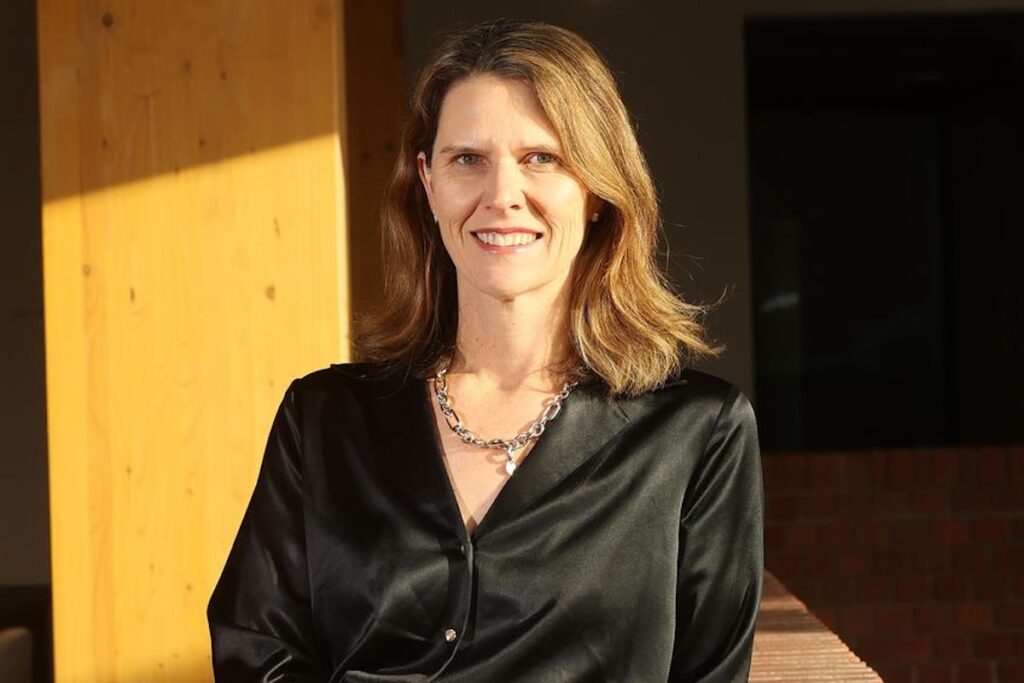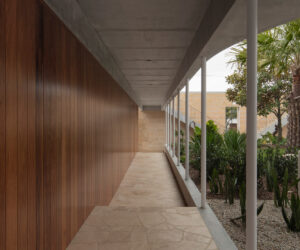Building a Circular City: Q&A With Ali Wastie, CEO of the City Of Greater Geelong
Regional Victoria’s largest and leading annual design festival, Geelong Design Week presents 10 days of more than 70 innovative exhibitions, workshops, tours, talks and experiences throughout Geelong, the Bellarine Peninsula and the Surf Coast from 21-30 November.
The program also puts a spotlight on how Geelong is championing the way forward for Australia’s circular future, showcasing how the UNESCO City of Design is positioning itself as a sustainability leader and making progress in achieving its ambitious net-zero targets.
To celebrate the opening of the festival, Communications Collective Director Genevieve Brannigan sat down with Ali Wastie, CEO of the City of Greater Geelong, to discuss Geelong’s future as a circular city.
How do you define a “circular city”? Why should cities worldwide strive for circularity?
Circular cities focus on three key principles of a circular economy: designing out waste and pollution, keeping products and materials in use, and regenerating natural systems. In a circular economy, resources are reused, repaired, or recycled to maintain their value for as long as possible, while urban greening, clean energy, and sustainable practices enhance natural ecosystems instead of depleting them.
By reducing waste and increasing reliance on renewable energy, circular cities play a critical role in combatting climate change and cutting greenhouse gas emissions. They also foster economic opportunities by driving innovation, creating jobs, and supporting the growth of green industries. The resilience of circular systems also allows cities to better adapt to climate change and economic, and supply chain disruptions.
Perhaps most importantly, circular cities enhance the quality of life for their residents. By prioritising cleaner air, greener spaces, and healthier living conditions, they create vibrant, liveable communities while paving the way for a sustainable urban future for us all.
What strategies and initiatives has the City of Greater Geelong implemented to achieve net-zero by 2035?
To reach our ambitious goal of net-zero by 2035, we’re taking a multi-faceted approach that integrates advocacy, environmental action, community collaboration, and innovative partnerships.
Central to this effort has been our commitment to integrating sustainable practices across all aspects of our operations. We have installed 2MW of solar on City facilities since 2008, have expanded our fleet of electric and hybrid vehicles, developed new innovative ESD provisions for planned urban growth areas, and much more. Thanks to these strategies, our corporate greenhouse emissions have reduced from 2016-22 by 50.5%, with the largest reduction in emissions coming from the use of electricity.
We’re also working together with key organisations across the region such as Barwon Water and Deakin University and have strongly advocated for national sustainability reform. Community education also plays a vital role in our net-zero strategy. Initiatives like Sustainable House Day, which attracted over 1,000 participants, and the “Our Climate Actions” interactive website have empowered residents to adopt sustainable practices and improve household energy efficiency.
There’s more to be done to reach our goal by 2035, but we’re making great strides in creating a cleaner, greener future for its community and have a clear roadmap ahead of us.
2024 marks ten years of Geelong’s Clean Economy Business Support initiatives. How has the scheme empowered local businesses and what have been some of the major achievements over the past decade?
Over the past decade, Geelong’s Clean Economy Business Support initiatives have played a transformative role in empowering local businesses. Since its inception in 2014, the Clean Economy Business Support program has offered vital assistance to hundreds of businesses, fostering innovative projects and enhancing their capacity to operate sustainably. Our Clean Economy Grants support local businesses to get their innovative projects off the round and help develop our circular economy. For example, the most recent recipients developed and commercialised a new finance model to promote a circular economy in housing and to sought to bring lithium-ion batteries collected from landfill to new life.
In addition to grants, the program also provides access to tailored resources and expert guidance on energy efficiency and net-zero transitions, helping businesses reduce operating costs, improve sustainability, and remain competitive in an increasingly eco-conscious market.
These initiatives are all part of how we are fostering a thriving ecosystem of environmentally conscious local businesses, contributing to our future as a Circular City as well as our long-term economic resilience.
How can other cities in Australia—and globally—learn from Geelong’s approach to circularity and clean economy innovation?
We want our approach to circularity and clean economy innovation to serve as a powerful example for cities across Australia and around the world. Our efforts are increasingly recognised on the global stage, with international delegations—including representatives from the United States, Indonesia, Malaysia, and Japan—visiting Geelong in the past year to learn from our clean economy initiatives.
By demonstrating tangible outcomes—such as job creation, emission reductions, and investment in renewable energy and recycling infrastructure—Geelong provides a roadmap for how cities can effectively integrate circular economy principles into their urban planning and economic development strategies. Our willingness to share insights, collaborate internationally, and lead by example continues to position Geelong as a leader in clean economy innovation, offering valuable lessons for cities worldwide.
More information: geelongdesignweek.com.au



